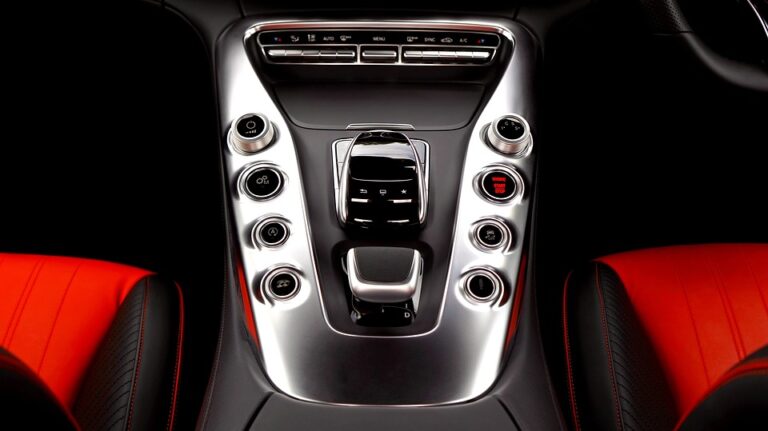The Future of Electric Vehicles: Trends Shaping the Automotive Industry
The automotive industry stands at the cusp of a revolutionary transformation, with electric vehicles (EVs) leading the charge. In this article, we will explore the burgeoning trends in the automotive space as manufacturers and consumers alike pivot towards a greener, more sustainable future. With an emphasis on the latest automotive news, we’ll delve into what lies ahead for electric vehicles.
The Rise of Electric Vehicles
In recent years, electric vehicles have transitioned from niche products to mainstream competition. According to a report by the International Energy Agency (IEA), electric car sales surpassed 6.6 million units in 2021, marking a staggering 108% increase from the previous year. This growth trajectory indicates a robust shift in consumer preferences as we witness an increasing number of automakers investing heavily in EV technology.
Government Incentives and Regulations
One of the significant drivers behind this growth is the host of government incentives aimed at promoting EV adoption. Various countries have implemented tax rebates, grants, and subsidies to encourage consumers to switch to electric. For example, the United States offers a tax credit of up to $7,500 on new EV purchases, a substantial incentive for potential buyers.
Moreover, regulations aimed at reducing carbon emissions are also reshaping the automotive news landscape. The European Union has set ambitious targets, aiming to reduce vehicle greenhouse gas emissions by 55% by 2030, paving the way for electric-only sales by 2035. These policies are inviting various stakeholders, from manufacturers to consumers, to align with sustainable practices.
Technological Advancements Driving Innovation
Technological innovation is crucial for the automotive industry, especially concerning electric vehicles. Several trends in EV technology are emerging, including:
-
Improved Battery Technology: Advances in battery technology are significantly addressing range anxiety. Manufacturers are focusing on solid-state batteries, which promise greater energy density, faster charging times, and improved safety compared to traditional lithium-ion batteries. For instance, companies like QuantumScape are developing batteries that may eventually allow electric cars to travel over 500 miles on a single charge.
- Autonomous Driving: The convergence of EVs and advancements in autonomous driving technology is another key trend. As EVs become more prevalent, companies are leveraging this opportunity to introduce self-driving capabilities. Tesla, Waymo, and other tech giants are investing billions to refine automated systems, which could revolutionize personal and public transport.
Smart Infrastructure Integration
Building the infrastructure necessary for widespread EV adoption is also a focal point in the automotive news sphere. The rise of smart city initiatives—integrating EV charging networks with renewable energy sources—presents a viable solution for reducing range anxiety and increasing the accessibility of charging stations. Local governments are increasingly looking to partner with tech companies to establish smart charging solutions that offer real-time data on charging availability and peak demand times.
!
Image Suggestion: Smart EV Charging Station
Alt Text: Smart EV charging station showcasing the future of electric vehicles in automotive news.
Consumer Trends and Preferences
In addition to technological innovations and regulatory frameworks, consumer behaviors are vital in shaping the future of electric vehicles. Key trends include:
-
Rising Environmental Awareness: As evidence of climate change becomes more apparent, consumers are increasingly aligning their purchases with their values. A survey from McKinsey stated that 70% of respondents indicated they would be more likely to buy a car from a brand committed to sustainability.
- Younger Generations Embracing EVs: The preferences of younger consumers (Millennials and Gen Z) significantly influence the market. This demographic values modern technology and sustainability, making electric vehicles an attractive option. They are more receptive to subscription models and shared mobility solutions that EV startups are increasingly offering.
Example: Tesla’s Disruption of the Automotive Industry
Tesla serves as an excellent analogy for understanding the impact of electric vehicles on traditional automotive companies. Once considered an unconventional car manufacturer, Tesla has disrupted the market with its direct-to-consumer sales model, superior technology, and strong brand loyalty. Its success has compelled legacy automakers to fast-track their own electric vehicle programs, highlighting the importance of innovation and adaptability in the automotive sector.
Image Suggestion: Tesla Electric Vehicle
Alt Text: A Tesla electric vehicle showcasing the innovation in automotive news.
Looking Ahead: The Future of Electric Vehicles
As we navigate the future of the automotive industry, several points stand out:
-
Increased Industry Competition: The influx of new entrants into the EV market signifies a competitive landscape, pushing innovation and lowering prices.
-
Expanded EV Models: Expect a greater diversity of electric vehicles in terms of body styles and price points, catering to mainstream and luxury markets.
- Sustainability as a Core Value: As more consumers prioritize sustainability, automakers will increasingly focus on ethical sourcing and production processes.
In conclusion, the future of electric vehicles is bright, fueled by technological advancements, evolving consumer behaviors, and robust regulatory support. Keeping an eye on the latest automotive news will be crucial for stakeholders looking to navigate this remarkable transition.
For more insights on the evolving automotive landscape, check out our articles on Electric Vehicle Myths Debunked and Top Trends in Automotive Technology. For external resources, consider visiting the International Energy Agency for detailed reports on electric vehicle performance and growth trends globally.
By understanding these dynamics, consumers, businesses, and policymakers can prepare for a more sustainable and technologically advanced automotive future.


